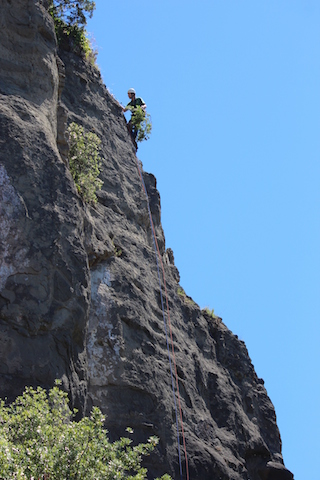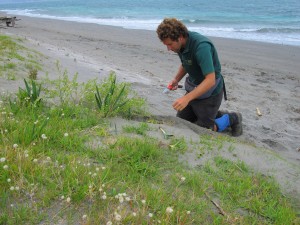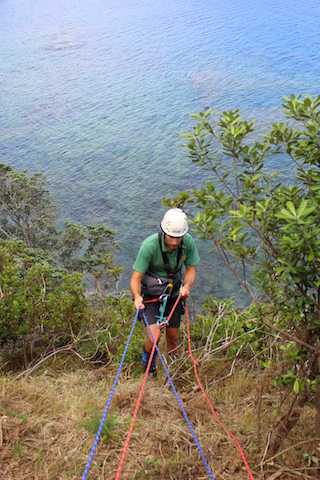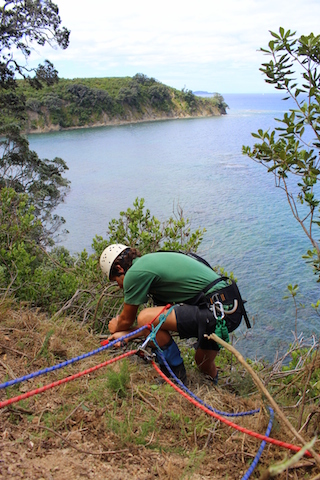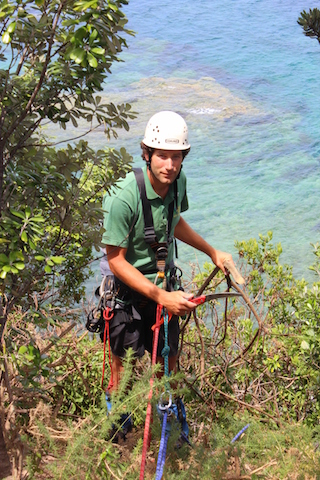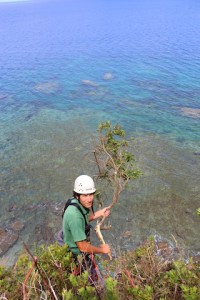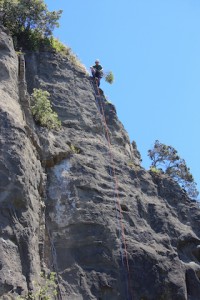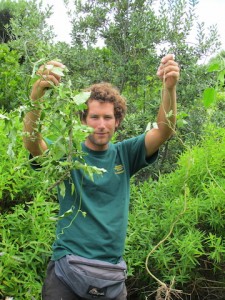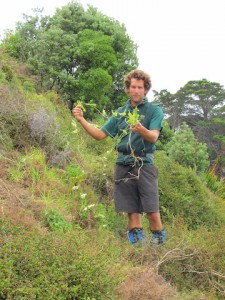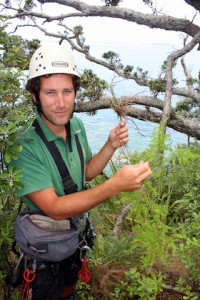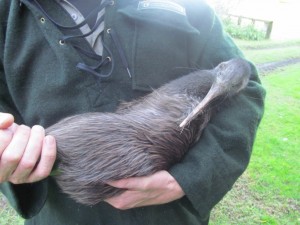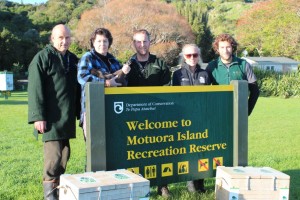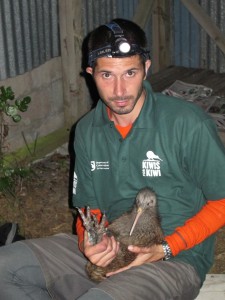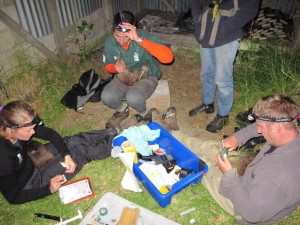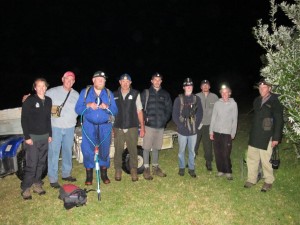Despite a thunderstorm over Auckland at 5:30am on Sunday morning (25/08/13) 96 people got to Sandspit by 8:00am prepared to plant trees on Motuora. Although cloudy with occasional drizzle the day was calm so the trip to Motuora was smooth and the Kawau Kat was able to nose in to the shore enabling folk to disembark using a gang plank.

Embarking the Kawau Kat to leave Motuora
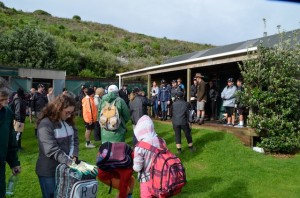
Ray Lowe, MRS Chairman welcoming volunteers
Before planting began Ray Lowe, MRS Chairman, welcomed the large contingent of Bridgestone workers as well as regular members and members of Forest and Bird who had braved the elements to come and plant trees. He also acknowledged Bridgestone Ltd’s sponsorship of MRS. Bridgestone Ltd have supported the restoration work on Motuora by encouraging their workers to participate in the workdays and recently the Company became an important financial sponsor of the Motuora Restoration Society.
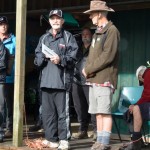
Bill Dyall & Ray Lowe
Bill Dyall, Bridgestone Ltd Corporate Accounts Manager, responded to Ray’s welcome and spoke enthusiastically about the participation of the Bridgestone team in the restoration work before he and Trish Southan, Bridgestone Consumer Business, presented a sign to be mounted on a sign on the potting shed that recognizes MRS sponsors.
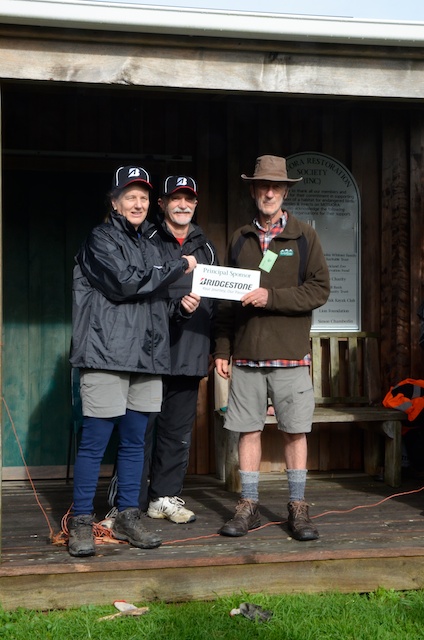
Bill Dyall & Trish Southan presenting sign acknowledging Bridgestone’s sponsorship of MRS
After the formalities some 5,000 trees were planted by the 96 volunteers under the able guidance of regular MRS members and volunteers, the group of Forest and Bird Society members present and MRS committee members. Many children also helped with the planting.
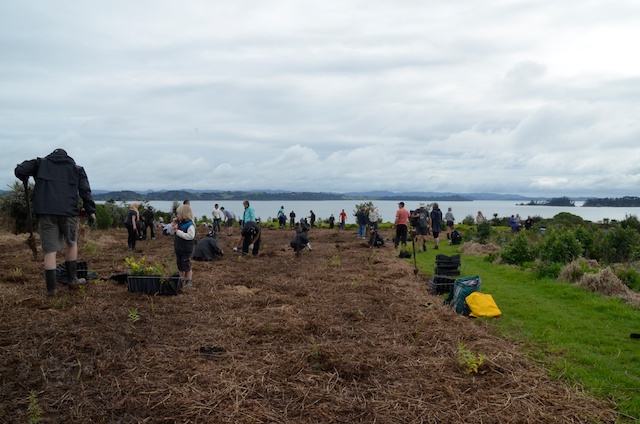
Busy planters
Planting was completed before noon so there was ample opportunity for folk to explore the island and see some of the bird life and the bountiful Kowhai and Manuka flowers.
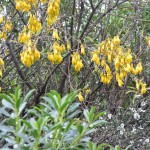
Kowhai planted in 2003
The Motuora Restoration Society is grateful for the support of members and volunteers as we recognise that it is a considerable commitment to travel to Sandspit early on a Sunday morning and contribute to the cost of hiring the ferry to Motuora. MRS subsidises the ferry costs as we want as many people as possible to experience the magic of Motuora.
We hope you will come again.
A gallery of photos from Sunday 25th August 2013:
Click on image to see larger version.
-

-
Bill Dyall & Ray Lowe
-
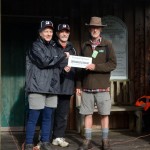
-
Bill Dyall & Trish Southan presenting sign acknowledging Bridgestone sponsorship
-
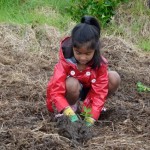
-
Happy young planter
-
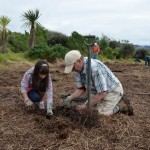
-
Colin, MRS Committe, with able helper
-
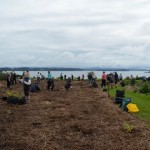
-
Busy planters
-
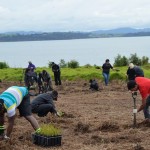
-
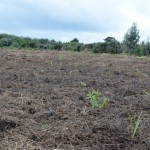
-
Completed planting!
-
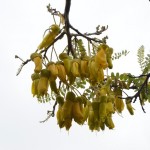
-
Kowhai flowers against grey sky.
-
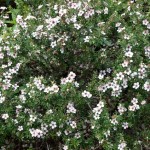
-
Manuka flowers
-
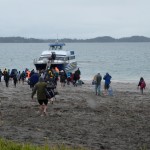
-
Embarking the Kawau Kat to leave Motuora
-

-
Kowhai planted in 2003
-
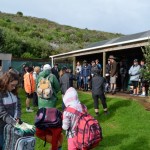
-
Ray Lowe, MRS Chairman welcoming volunteers

